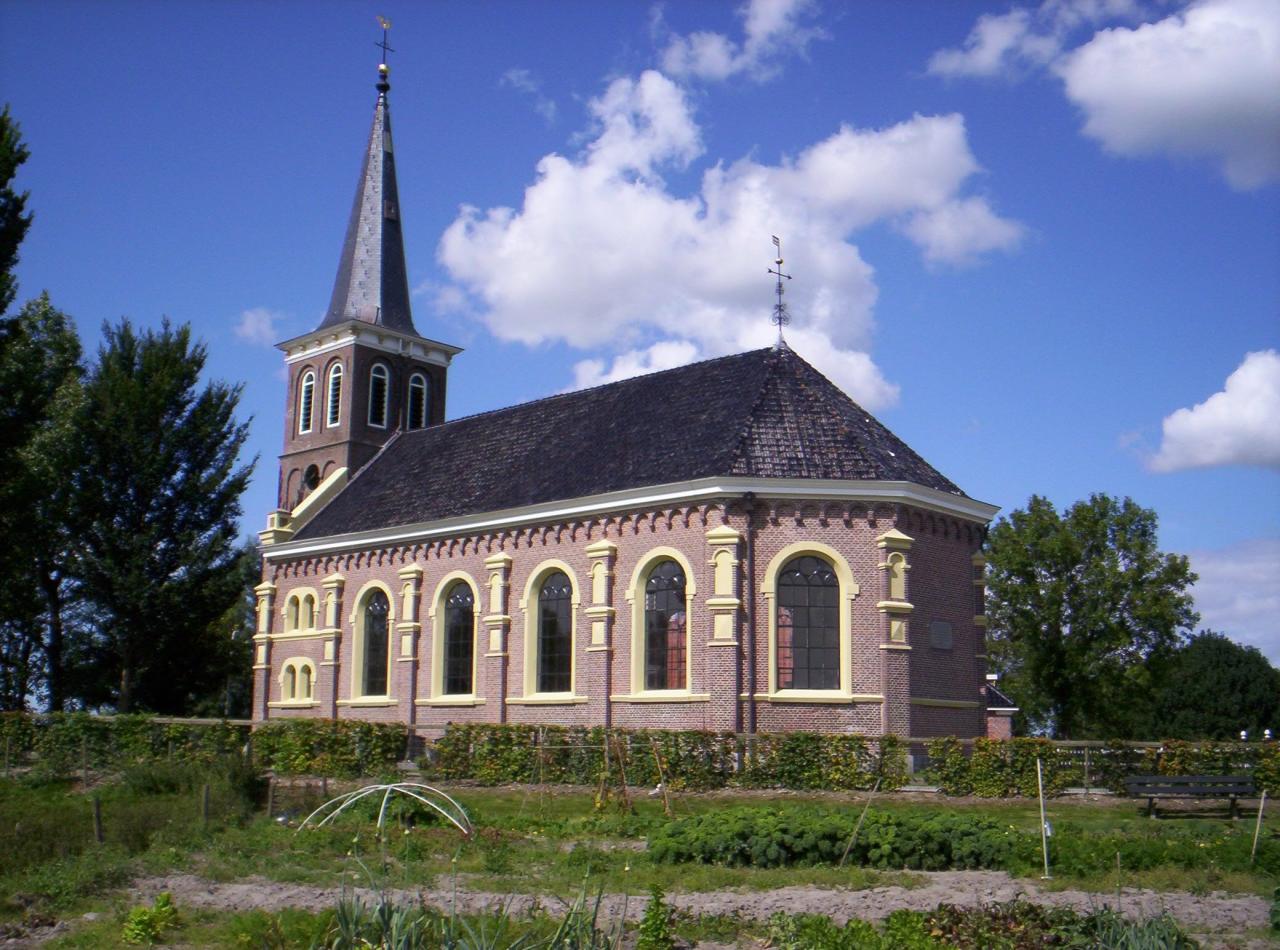Baaium Church
After a major restoration, the 19th century church of Baaium looks beautiful again. The church can be considered very special, both inside and out; there is, among other things, a baptismal font from the fifteenth century.
About this building
The small village of Baaium and its approximately 125 inhabitants are located on the northern edge of the municipality of Littenseradiel, between Wjelsryp and Huns. The former reformed church stands in the heart of the village, at a crossing of the main road between Winsum and Dronrijp. The surrounding cemetery is owned by the Protestant Congregation Baaium-Wjelsryp. The church has been restored in three phases: the exterior in 1998/1999, the tower in 2004/2005 and the interior in 2011/2012. The church was finally put back into use after 27 years of vacancy on 29 June 2012. The church is four traves deep and has a three-sided choir closure. There is a round arch window in each bay with a wide, flat frame. The outer buttresses are enlivened with diamond heads and false niches. The entrance on the north side has been given a classicistic accent with a round arch frieze. The tower consists of three sections with large curved bank and is covered with a pinched needle tip. The highest section and spire protrude above the ridge of the church roof. - The organ was built in 1878 by Willem Hardorff (1815-1899). It was cleaned and restored as much as possible at the last restoration of the church. A real, comprehensive restoration has yet to take place. The village church of Baaium was taken over by the Alde Fryske Tsjerken Foundation on June 20, 2014 and came under the management of a Local Commission. It organizes concerts and exhibitions and rents out the church for mourning and wedding services and other special gatherings (anniversaries, family / organizations).



